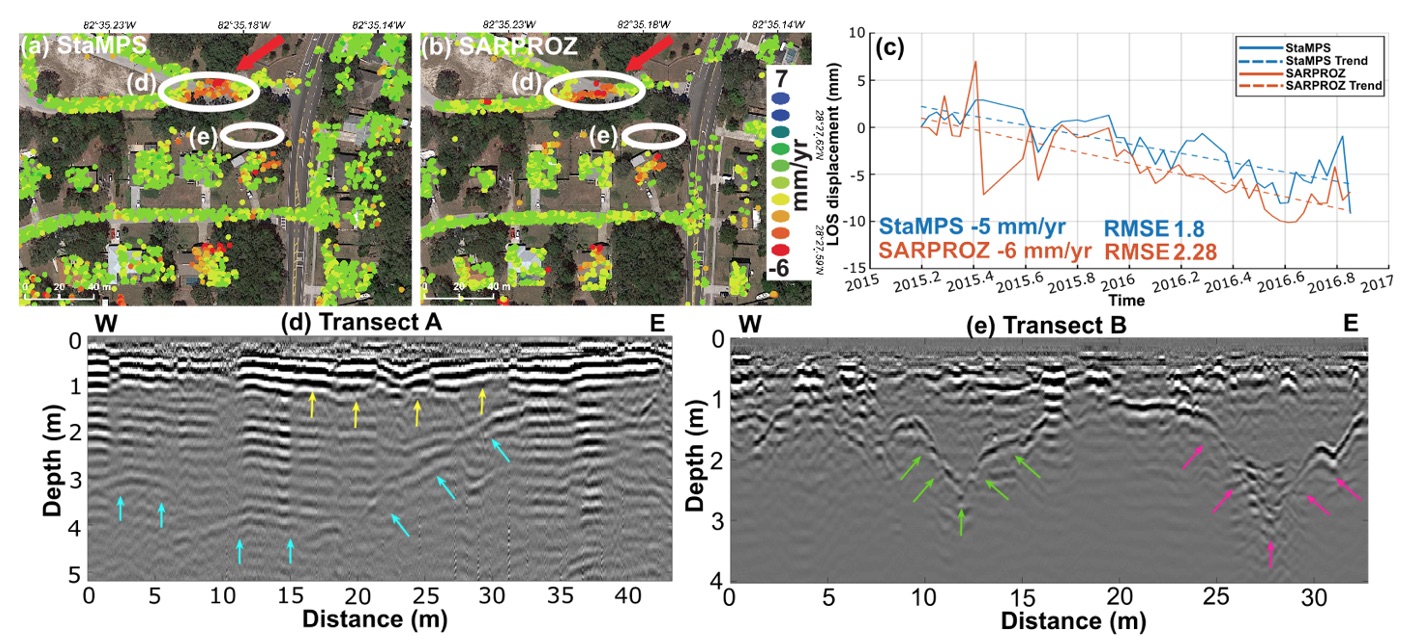Sinkhole research
Sinkhole activity in central Florida is a major natural hazard. Over the past several years, two events in particularly attracted media attention. In March 2013, a sinkhole collapsed beneath a house in Seffner and “swallowed” a person from his bedroom. In August 2013, a sinkhole collapse destroyed a resort complex near Disney World. However, these dramatic events are just extreme examples that stand out from a steady stream of ~ $200 million per year in property damage claims, which spike at times of anthropogenic groundwater withdrawals. Detecting incipient sinkhole activity is a challenging task because most of the activity occurs in the subsurface. However, in some cases, sinkhole activities also induce surface subsidence, which can be detected by space-based Interferometric Synthetic Aperture Radar (InSAR) observations.
As part of an NSF supported project, we have used InSAR observations to monitor sinkhole activities in central Florida to detect subsiding sites and resolve possible precursory subsidence prior to sinkhole collapse. We used high spatial resolution InSAR data acquired by the TerraSAR-X mission, as sinkholes in the study area are small (average diameter ~7 m). Results show several areas of localized subsidence in buildings ranging from 300 m2 to nearly 2000 m2, and subsidence trends ranging from -3 mm/yr up to -6 mm/yr in some cases (Oliver-Cabrera et al., 2020a, 2020b). Results were compared with in-situ surveys to help as ground-truthing, three of the subsiding locations were found to be related to sinkhole presence or development (Figure 1).
Figure 1. Space-based detection of sinkhole activity in central-western Florida. (a) and (b) Velocity maps of surface movement detected from 1.7 years long TerraSAR-x dataset processed by StaMPS (a) and SARPROZÓ (b) software packages. The red arrow shows the scatterers that were used to plot the time series in (c). The white ellipses mark the locations of the two GPR transects shown in (d) and (e). [Source: Oliver-Cabrera et al., 2020].
Land subsidence publications:
Oliver-Cabrera et al. (2020);
Orhan et al. (2021);
Robinson et al. (2021);
Oliver-Cabrera et al. (2022); 